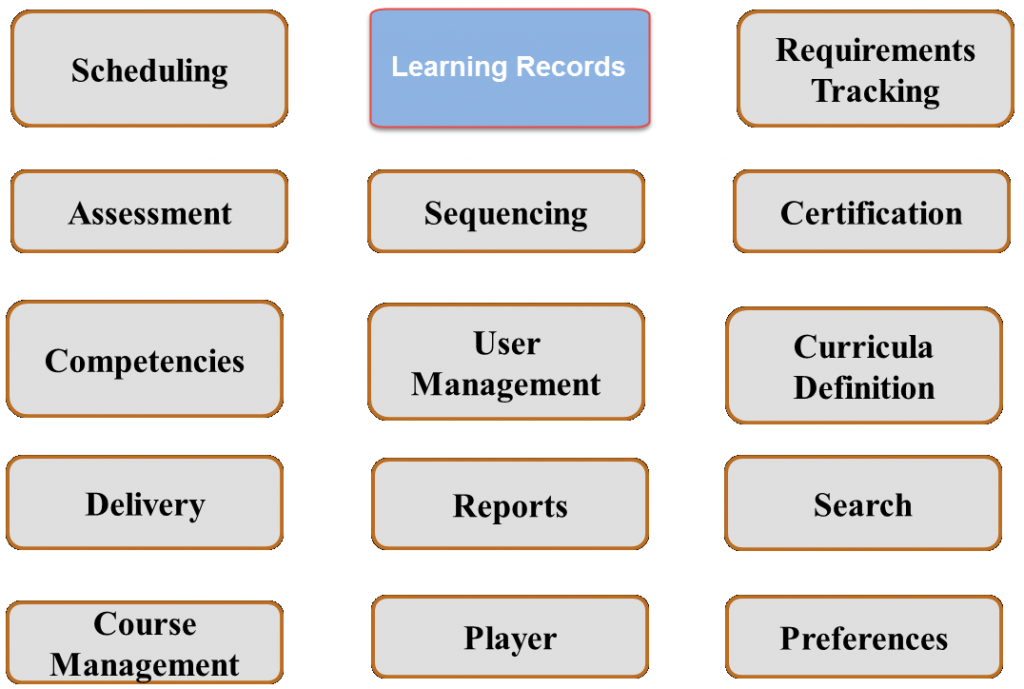Introduction to xAPI: Part 2
This is Part 2 of Introduction to xAPI. In part 1, we discussed the history behind xAPI, why xAPI was developed and some of the benefits associated with xAPI. In this article, we’ll learn how xAPI works, define the Learning Record Store (LRS), and dispel some of the myths about xAPI.
How does xAPI Work?
Statements
xAPI utilizes the concept of an “activity stream”, which is based on work done by Google, Facebook and others. If you have ever “liked” a photo on Facebook, you’ve generated an “activity stream.”
| Jennifer liked Robert’s photo |
xAPI statements consist of an actor, a verb and an object. In the Facebook activity stream above, Jennifer is the actor, “liked” is the verb and “Robert’s photo” is the object. In xAPI, the statements generally involve some sort of learning activity. Here are a couple of examples:
| Jack completed safety training. Christie experienced the Great Wall in Second Life. |
Verbs
xAPI is very flexible. It does not “require” any particular verbs. A list of recommended verbs can be downloaded from the ADL verbs page. Or, you can make up your own verbs. Here are some things to consider when choosing verbs.
- Each verb has a description and can be translated to other languages.
- The verb ID should be an “iri”, or international resource identifier. Generally, you can think of it is a URL.
Ex: http://adlnet.gov/exapi/verbs/completed - If the verb you need does not match the description, don’t use it. When reporting by verbs it is best to avoid confusion.
- Different standards are being developed on top of xAPI and will have their own verbs. For example, the AICC and ADL are developing the next generation of SCORM, called cmi5. It will have its own list of verbs.
Complex Statements
xAPI has many layers. Complex statements can be developed that include both context and results. This can be very useful for analyzing delivery methods.
| On an iPad, while offline, John completed Sales Training 101 with a score of 100. |
In this example, the context is “while using an iPad offline.” The results are that John achieved a score of 100.
The Learning Record Store
All xAPI statements are stored in a “Learning Record Store”, or LRS. One nice thing about the xAPI standard is it requires the LRS be able to report the statements back. So the LRS is the receiver and reporter of xAPI statements.
The LRS can be either stand-alone, or integrated in an LMS. In the case of VTA, we have integrated the LRS right into the VTA database.
Common xAPI Myths
As with any new technology, there are some common misconceptions about what xAPI does and what it does not do.
Will xAPI Replace SCORM?
No, SCORM is still around and will be for many years to come. If you have working SCORM content, there is no need to convert it to xAPI unless you have specific need for some xAPI features. If you need a more flexible SCORM, fixing some of the problems we discussed in part 1 of this article, you will need to wait for CMI-5. I’ll discuss CMI-5 in a future blog article.
Will the LRS replace the LMS?
An LRS does only one small function of an LMS; storage of records. Instead, the LRS and LMS can work together to provide a more complete history of your students’ learning experiences.

What’s Next?
Predicting the future is always difficult, but here are my bold and fearless predictions.
Better LRS Analytics
The volume of data being written to LRSs is big…really big. In the future there should be a clear market for reporting tools to analyze LRS data.
Additional Protocols
Additional standards or protocols will be developed that use xAPI as the communication and data storage layer. This is not that bold a prediction — it’s already happening. The AICC and ADL are developing a new specification called cmi5, which will use xAPI as its base and will define LMS to content communication and launching. cmi5 is intended to replace both the AICC and SCORM specifications.
Additional Off-Line Content Players
These tools allow for development of learning experiences which can be played offline, such as on an iPad. The results are synched to the LRS when you come back online.
Summary
In part 1 of this article, we discussed the history behind xAPI, why xAPI was developed and some of the benefits associated with xAPI. In part 2 we learned how xAPI works, define the Learning Record Store (LRS) and dispel some of the myths about xAPI. If you’d like to learn more, I’ve included a few reference links below.
